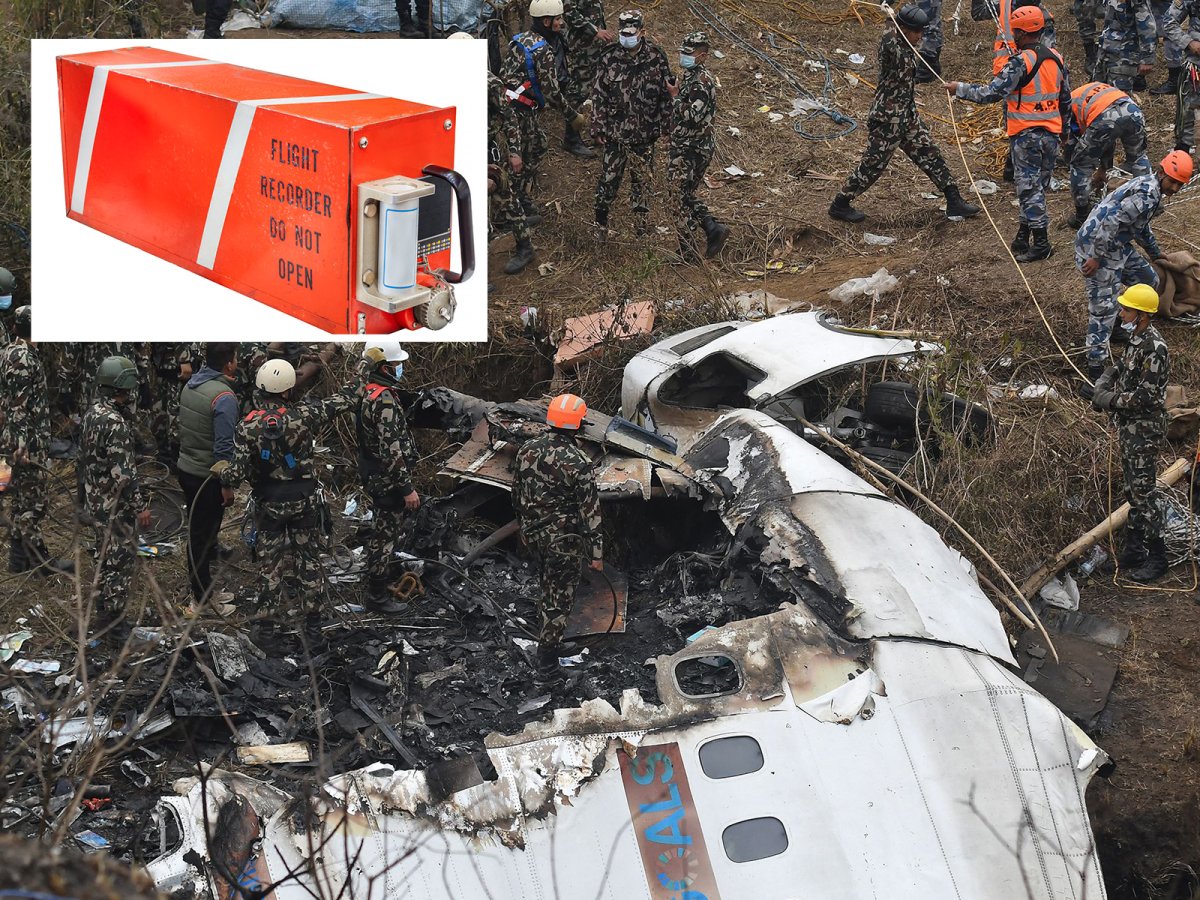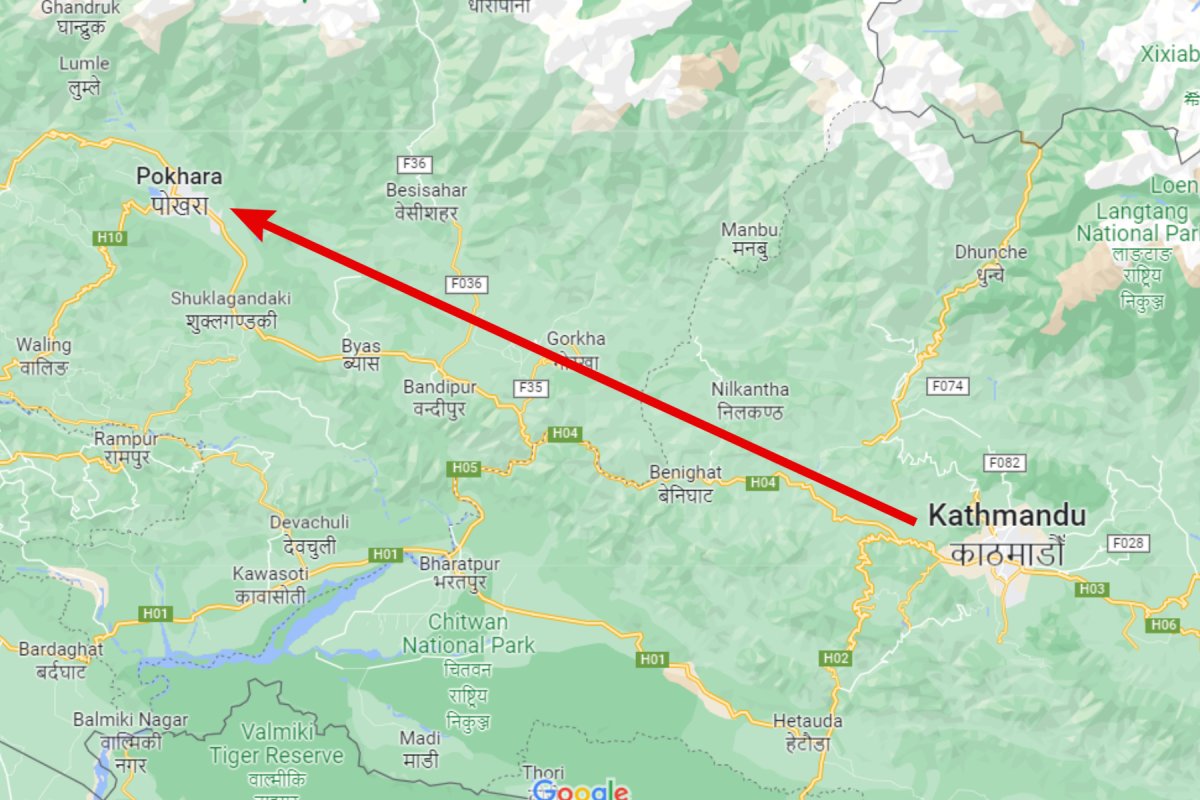A Yeti Airlines flight from Kathmandu crashed as it descended towards the city of Pokhara in Nepal on Sunday, killing at least 69 of the 72 people on board, according to the country's Civil Aviation Authority.
Kaski District Police Chief Superintendent Ajay KC said in a statement that the chance of finding anyone living in the wreckage was "extremely low." This is Nepal's deadliest plane crash in more than 30 years.
Videos from onlookers seem to show the plane descending towards the ground, before rapidly twisting onto its side, left wing pointing downwards. Shortly thereafter, the plane crashed, plunging into a gorge.

The reasons for the plane's twisting action and subsequent crash have yet to be confirmed, but a flight data recorder and a cockpit voice recorder, commonly known as the black box, were recovered from the wreck site on Monday, which will help investigators to determine the events that occurred on board before the crash.
"The cockpit voice recorder (CVR) will inform the authorities on the conversation between flight deck crew immediately prior to the crash," David Stupples, a professor of electrical and electronic engineering at City, University of London, told Newsweek.
"The flight data recorder (FDR) will provide information on the status of the aircraft up to the point of crash; to include, airspeed, attitude of the aircraft, aileron settings, flap settings, throttle settings, propeller pitch settings, undercarriage settings, elevator settings, engine temperature settings, etc. Together the investigators will be able to recreate the last fateful seconds of the crash in order to ascertain the cause."

The BBC has reported, citing a Pokhara airport spokesperson, that the pilot did not indicate that anything was going wrong over the radio as the plane approached the landing. "Mountains were clear and visibility was good", the pilot had said according to the spokesperson, with "no issue with weather."
"Clearly the aircraft suddenly rolled, followed by a descent, followed by ground impact," Guy Gratton, an associate professor of aviation and the environment at Cranfield University in the U.K, told Newsweek.
The aircraft likely rolled due to differential airflow on one of the wings, according to Gratton.
"[This] essentially means you've suddenly got one wing listing and the other not, which is why the aircraft suddenly decided to roll the descent."

The reason for this occurring could have been the plane stalling, triggered by a large range of factors, Gratton said.
"This risk of an aircraft stalling on final approach is probably known to every pilot in the world. We're all trained in it. So for it to actually happen, particularly in a large aircraft, is extremely unusual," he added
If a plane is high above the ground, a stall can often be recovered from. However, due to the likely low altitude of the Yeti Airlines plane when it potentially stalled, there was probably no time to act.
"There's a bunch of reasons that could have caused it, or could have ganged up jointly," Gratton said.
"One obvious starting point is that there may have been some error by the pilots, in essence suggesting that they were flying slower than they should have been on the approach. Variation on that might be that they had the wrong flap settings which would change the stalling speed. Going into technical issues, an obvious consideration might be that for some reason the cockpit instruments are misreading and that caused the pilots to fly at a different speed, so they thought they were."
One other possibility is that a sudden change in the direction of wind, i.e. a wind shear, caused the plane to crash.
"When close to the ground, the wind strength and/or direction change unpredictably as the aircraft descends to land. It's not hard to envisage a situation where such a thing could occur, with the complex air flow that can often happen around mountains. And of course, this is Nepal. There's mountains everywhere," said Gratton.
Nepal's "hostile topography" and "diverse weather patterns" were considered the biggest danger to flights, according to a 2019 safety report from the country's Civil Aviation Authority.
"I would say I would have high confidence that what we saw in that video is the aircraft stalling. I can't be absolutely certain, but I would say it's likely. What I think we've got there is a likely event, but a great many different possible explanations for why that event occurred," Gratton said.
Among the passengers and crew were 57 people from Nepal, five Indians, four Russians, two South Koreans, one Australian, one person from France, one from Ireland and one Argentinian. Six of the passengers were children, according to the Civil Aviation Authority. One of the pilots, Anju Khatiwada, lost her husband in a plane crash in 2006, according to Reuters.
Nepal observed a day of mourning on January 16.
Do you have a tip on a science story that Newsweek should be covering? Do you have a question about plane crashes? Let us know via science@newsweek.com.
Uncommon Knowledge
Newsweek is committed to challenging conventional wisdom and finding connections in the search for common ground.
Newsweek is committed to challenging conventional wisdom and finding connections in the search for common ground.
About the writer
Jess Thomson is a Newsweek Science Reporter based in London UK. Her focus is reporting on science, technology and healthcare. ... Read more
To read how Newsweek uses AI as a newsroom tool, Click here.








